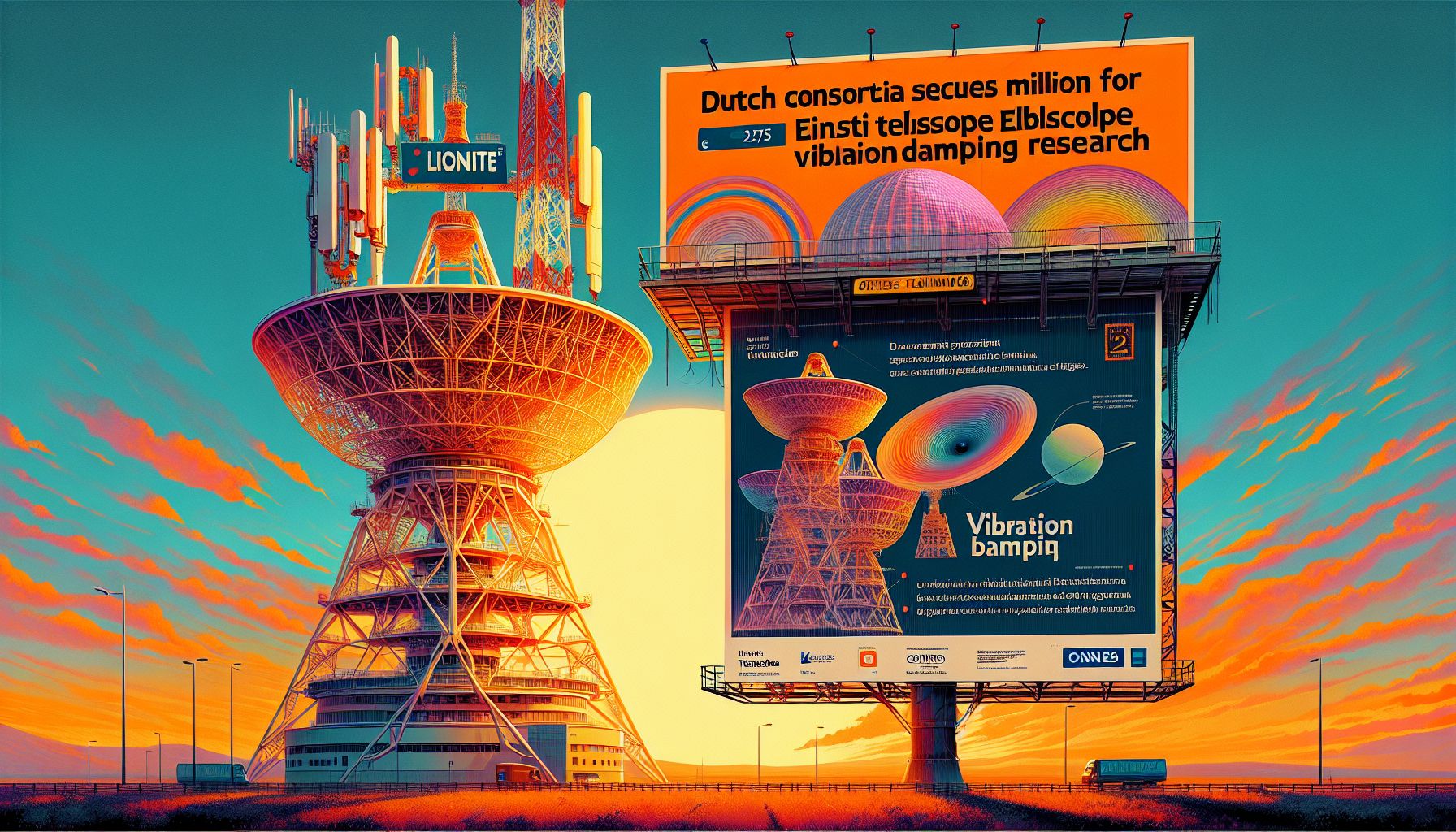Dutch Consortia Secure €2.75 Million for Einstein Telescope Vibration Damping Research

Netherlands, Tuesday, 17 September 2024.
Two Dutch consortia, led by Lionite and Onnes Technologies, have been awarded €1.375 million each to develop advanced vibration damping technologies for the Einstein Telescope. This groundbreaking project aims to create Europe’s most sensitive gravitational wave observatory, capable of detecting vibrations as small as one billionth of a meter.
The Driving Forces Behind the Innovation
The consortia spearheading this innovation are composed of high-tech companies and renowned knowledge institutes. Lionite, headquartered in Delft, and Onnes Technologies, based in Leiden, lead the two groups. Both consortia are recipients of the R&D grants, which are part of the Einstein Telescope valorisation program funded by the Dutch National Growth Fund. This collaboration involves partners such as DEMCON B.V., Innoseis B.V., Nikhef, Quantified Air B.V., Somni Solutions B.V., VSL B.V., and TU Delft, all contributing to the development of these critical technologies.
Addressing the Challenges of Vibration Damping
The Einstein Telescope, set to be Europe’s most advanced gravitational wave observatory, requires extreme sensitivity to detect minute disturbances. The vibration damping technologies being developed are crucial as even the smallest vibrations can interfere with the measurements. The innovations by the SENVIDET consortium aim to create ultra-sensitive acceleration sensors capable of detecting movements as small as one billionth of a meter. Lead engineer Jochem Klaassen from Lionite emphasized the challenge, noting that there is no still reference point on Earth as stable as the Einstein Telescope itself.
Cryogenic Vibration Isolation (ICVI)
The ICVI consortium, led by Onnes Technologies, focuses on cryogenic vibration isolation to improve the telescope’s sensitivity by eliminating new vibration sources. This involves creating stable, cold environments for optics by cooling setups to cryogenic temperatures. CEO Max Kouwenhoven stated that ICVI is a continuation of the Netherlands’ legacy in low-temperature physics and has potential applications in both the semiconductor and pharmaceutical industries. This innovation aims to enhance the telescope’s ability to perform sensitive measurements at low frequencies, crucial for detecting gravitational waves.
Mechanics of Advanced Vibration Damping
The technologies developed by the consortia leverage advanced materials and precision engineering. For instance, SENVIDET utilizes effects between fiber optics and seismometers embedded in surrounding rock layers to detect minute deviations. These sensors are designed to determine deviations at the billionth meter and billionth degree angle. Additionally, the ICVI project incorporates cryogenic technology to isolate and dampen vibrations at extremely low temperatures, ensuring the telescope’s operations are not compromised by external disturbances.
Impact on Science and Industry
The advancements in vibration damping for the Einstein Telescope are poised to have a significant impact not only on astrophysics but also on related industries. By enhancing the sensitivity and accuracy of the telescope, researchers can gain deeper insights into phenomena such as black hole collisions and the early universe. Furthermore, the technologies developed for this project have versatile applications, particularly in the semiconductor and pharmaceutical sectors, where precision and stability are paramount.
Looking Ahead
The Einstein Telescope is expected to be operational between 2028 and 2035, with potential construction sites being considered in the border region of the Netherlands, Belgium, and Germany. The location decision is anticipated to be announced in 2026. As the project progresses, the collaboration between science and industry will continue to drive innovation, ensuring that the Einstein Telescope becomes the most sensitive gravitational wave observatory in Europe.
Bronnen
- liof.nl
- www.einsteintelescope-emr.eu
- www.universiteitleiden.nl
- journals.aps.org
- innovationorigins.com

